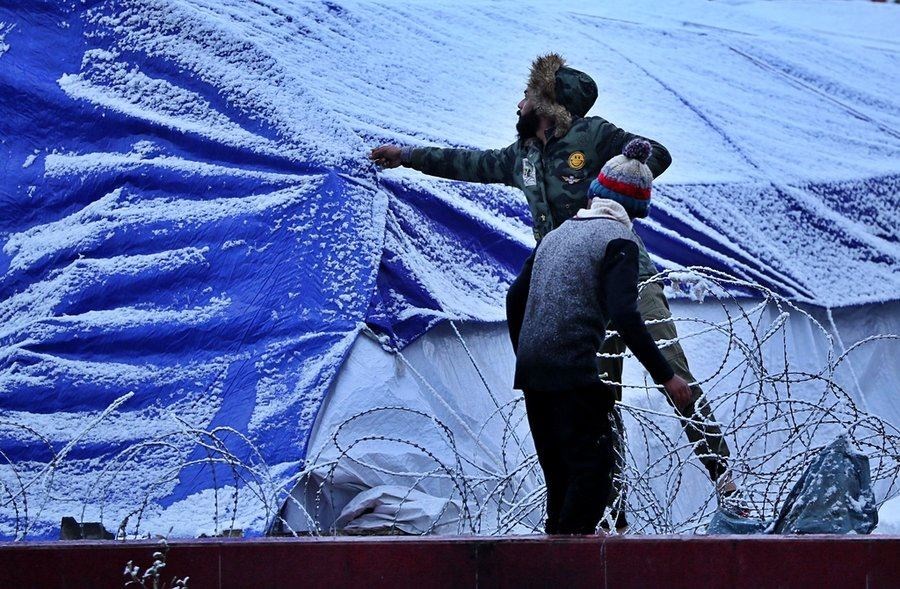Reprinted with permission from The Christian Science Monitor
Months of demonstrations have challenged the regime and set a template for redefining community among Iraqis.
FEBRUARY 11, 2020 - Iraq’s capital of Baghdad was carpeted with a rare snowfall Tuesday. It brought people onto the streets to make snowmen together and join in friendly snowball fights. The collective experience was an apt reflection of the past four months in Iraq. Since Oct. 1, tens of thousands of young people have maintained nonviolent and leaderless protests in major cities, hoping to redefine the meaning of community for Iraq. So far, despite the killing of more than 500 demonstrators, neither the protesters nor their shared vision has melted away.
 Protesters shake snow off their tent Feb. 11 in Baghdad’s Tahrir Square, one center of protests since Oct. 1.AP
Protesters shake snow off their tent Feb. 11 in Baghdad’s Tahrir Square, one center of protests since Oct. 1.AP
With nearly half of Iraqis under age 21, the protesters are as difficult to ignore as are their idealistic aims. They focus on creating a secular state that respects civic rights and an end to a type of government in which power and oil wealth are divvied up by religious and ethnic groups. They also want foreign powers (namely Iran and the United States) to stop meddling in Iraqi affairs.
Such aims are similar to those raised during months of protests in nearby Lebanon. In both countries, the uprising has led to the downfall of a prime minister and an uneasy tension with the political elite over who will run government. In Iraq, the protesters have a powerful ally, the revered Shiite cleric Ayatollah Ali al-Sistani. He has called for an end to the killing of protesters and for free and fair elections “as soon as possible.” A new government, he says, must earn the people’s trust.
Because of Iraq’s pivotal position in the Middle East, its protests may be the most significant of the many youthful protests that erupted worldwide in 2019 from Chile to Algeria to Hong Kong. If one element binds these grassroots movements, it has been the rejection of how governments have been organized and an embrace of inclusive democracy based on universal principles.
In a speech Monday, Achim Steiner, administrator of the United Nations Development Program, described this global trend in its broadest meaning:
“From the grassroots, to the business communities, to people voting with their feet in protest, mature democracies and autocracies alike are experiencing a new form of community today – a new form of people power – representing a profound shift in the global landscape of collaboration and dissent. ...
“We once thought of a community as a group of people who live in the same geographic area, or who share socio-economic, ethnic, linguistic, or religious characteristics. The evolving global context, including the extent to which new technologies have empowered communication and information-sharing at the individual-level, requires us to embrace a far wider definition.
“Many communities that drive change now cut across the boundaries of class, geography, language, religion, political orientation, and identity. They do not ‘respect’ the typologies of the past.
“What binds them together is shared experience, understanding, belief, and common visions and ways of working.”
His explanation helps justify the close attention to the protests in Iraq. A new meaning of community may be forming, one that could reshape a troubled region. Like a blanket of snow, young Iraqis are bringing a country together in a way it rarely experiences.
Page created on 2/13/2020 9:49:23 PM
Last edited 2/13/2020 9:55:12 PM
